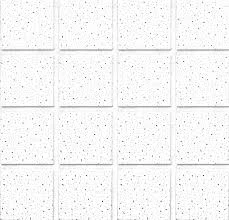- Afrikaans
- Albanian
- Amharic
- Arabic
- Armenian
- Azerbaijani
- Basque
- Belarusian
- Bengali
- Bosnian
- Bulgarian
- Catalan
- Cebuano
- Corsican
- Croatian
- Czech
- Danish
- Dutch
- English
- Esperanto
- Estonian
- French
- German
- Greek
- Hindi
- Indonesian
- irish
- Italian
- Japanese
- Korean
- Lao
- Malay
- Myanmar
- Norwegian
- Norwegian
- Polish
- Portuguese
- Romanian
- Russian
- Serbian
- Spanish
- Swedish
- Thai
- Turkish
- Ukrainian
- Uzbek
- Vietnamese
Ліст . 04, 2024 15:32 Back to list
Understanding T-Bar Ceiling Wiring for Optimal Installation and Design Efficiency
Understanding T-Bar Ceiling Wire
In the construction and architectural industry, the importance of ceiling systems cannot be overstated. One of the integral components in the assembly of suspended ceilings is the T-bar ceiling wire. This essential piece of hardware plays a significant role in ensuring the stability and durability of ceiling tiles and grid systems. In this article, we will explore the different aspects of T-bar ceiling wire, its applications, specifications, and installation processes.
What is T-Bar Ceiling Wire?
T-bar ceiling wire, also known simply as ceiling wire or suspension wire, refers to the wires used to support the T-bar grid systems that form the framework for a suspended ceiling. This wire is typically made of steel and is designed to provide strong and reliable support for the weight of the ceiling tiles while maintaining the structural integrity of the ceiling system.
Applications of T-Bar Ceiling Wire
T-bar ceiling wire is primarily used in commercial and industrial settings, where suspended ceilings are common. In office buildings, schools, retail stores, and hospitals, suspended ceilings are preferred due to their ease of installation and maintenance. These ceilings allow for the incorporation of lighting, HVAC systems, and other utilities without compromising aesthetics. The T-bar grid acts as a skeleton to hold the tiles, and the wiring ensures that everything remains secure.
The use of T-bar ceiling wire is not only limited to the installation of the ceiling itself. It can also be employed in various other applications, such as securing hanging fixtures, supporting light fixtures, and even as part of decorative installations.
Specifications and Types
T-bar ceiling wire comes in various specifications, which dictate its strength and suitability for different applications. The thickness of the wire typically ranges from 12 to 16 gauge, with thicker wires being more robust and able to support greater weight.
When selecting T-bar ceiling wire, several key specifications should be taken into consideration
1. Load Capacity Depending on the design and expectations of the suspended ceiling, the wire must be capable of supporting both the grid and the weight of the tiles.
2. Material While most T-bar wires are made of steel, consider whether you need galvanized wire to prevent rust and corrosion, especially in humid environments.
t bar ceiling wire

3. Length T-bar ceiling wires come in various lengths, which should be selected based on the height of the ceiling and the specific installation requirements.
4. Type Some T-bar ceiling wires come with adjustable features, allowing for easy tensioning and leveling of the grid system. Others are rigid and provide consistent support without the need for adjustments.
Installation Process
The installation of T-bar ceiling wire is a crucial step in creating a suspended ceiling. Here’s a brief overview of how it is typically done
1. Marking Layout The first step is to mark the layout for the T-bar grid on the ceiling. This includes the measurements for the main beams and the cross tees.
2. Hanging the Main Beams Begin by attaching the main T-bars to the ceiling using the T-bar ceiling wire. The wire is anchored to the structural ceiling using anchors or clips.
3. Installing Cross Tees Once the main beams are secure, cross tees are installed perpendicular to the main beams to create a grid for holding the ceiling tiles.
4. Leveling During installation, it’s essential to ensure that the grid system is level. Adjustments can be made by tightening or loosening the ceiling wires.
5. Inserting Ceiling Tiles Finally, the ceiling tiles are inserted into the grid, completing the suspended ceiling system.
Conclusion
T-bar ceiling wire is an indispensable element in the construction of suspended ceilings, providing the necessary support and stability for a functional and aesthetically pleasing ceiling system. Understanding its applications, specifications, and installation processes is vital for both contractors and DIY enthusiasts aiming to achieve a high-quality ceiling installation. Moreover, the success of a suspended ceiling largely depends on the correct selection and installation of T-bar ceiling wire, which ensures the long-term performance and structural integrity of the entire ceiling system.
-
Transform Interiors with PVC Gypsum Ceiling: A Stylish, Durable, and Moisture-Resistant SolutionNewsMay.19,2025
-
The Smart Interior Upgrade: Discover the Durability and Versatility of Gypsum Ceiling Access Panel SolutionsNewsMay.19,2025
-
The Smart Choice for Interior Design: Discover the Value of PVC Gypsum Ceiling SolutionsNewsMay.19,2025
-
Mineral Fiber Ceiling Tiles: The Smart Blend of Performance and AestheticsNewsMay.19,2025
-
Mineral Fiber Ceiling Tiles: The Superior Choice Over Gypsum for Sound and Fire SafetyNewsMay.19,2025
-
Mineral Fiber Ceiling Tiles: Eco-Friendly Strength and Style for Every CeilingNewsMay.19,2025







